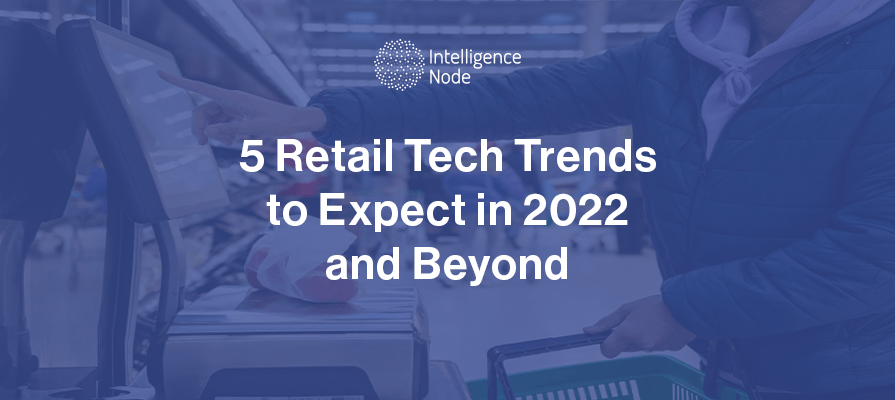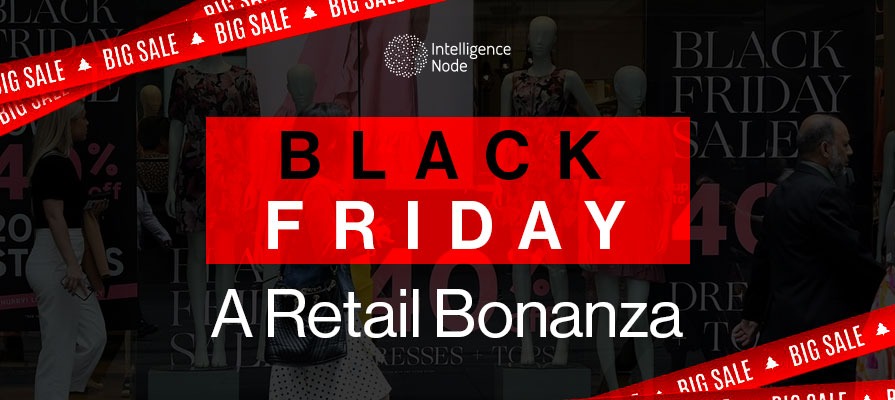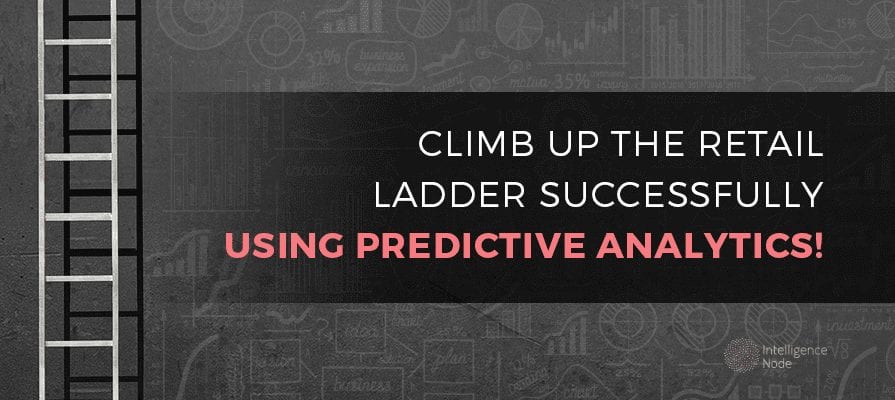As global retailers enter the new year, they’ll continue to use emerging technologies to improve the customer experience. While sales in physical stores will still comprise the majority of retail in the United States and Europe, ecommerce will continue to grow at a double-digit pace.
Retailers will continue to adopt emerging technologies in 2022 to close the gap between the digital and physical worlds, and to learn more about consumers. Mobile will become an increasingly important part of the retail equation as stores also evolve by adopting more IoT devices. And throughout the industry, retailers will attain more data about their shoppers and use artificial intelligence to enhance their marketing and merchandising.
Here are some of the top retail tech trends to expect in 2022:
1. Prescriptive Analytics Will Finally Overtake Predictive Analytics
Personalization in retail will move from an option to a competitive necessity in 2022. Retailers will use data and AI platforms to better engage customers with a highly-targeted, personalized shopping experience both online and in the store. More retailers will use AI-based capabilities and technologies to better match shoppers with products. They will be able to access personal shopping history, demographics, page views and clicks then use AI to offer better recommendations and individually tailor their marketing.
Surcharita Mulpuru-Kodali, Vice President and Principal Analyst at Forrester, told Forbes that retailers will remove silos to unify disparate data and develop deeper customer insights. “Artificial intelligence will become retail for retail. In 2022, retailers will grab AI by the proverbial horns…Prescriptive analytics will finally overtake predictive analytics,” Mulpuru-Kodali said.
In the apparel industry, AI will be drive and enhance personalization with customized style recommendations, better omnichanel service and even a “social sales assistant” that can use social media views to optimize recommended products.
2. Big Retailers Will Refine the Check-out Free Experience
Major retailers are likely to pilot more “checkout-free” shopping technologies in 2018. Amazon premiered its Amazon Go checkout-free concept for employees in Seattle in December 2016 and is expected to test more locations in the coming year. Also called “just walk out” technology, it enables consumers with an app-enabled phone to simply pick up items then walk out without standing in line. Cameras and sensors in the store will work collaboratively to determine which items have been removed then use algorithms to tally the order an automatically bill the customer’s Amazon account.
Other retailers are already experimenting with the idea. In the United Kingdom, Tesco and Sainsbury’s also began testing checkout-free payment systems in 2021 and are expected to roll out to more locations in the coming year. In the United States, the Sam’s Club Scan and Go function allows shoppers to scan and pay for their own groceries then simply present a digital receipt at the door. Parent company Walmart has also been testing app-based checkout solutions in select locations.
Retailers are also simplifying or eliminating their mobile and web checkout process.
Amazon reports that more than half of its app users now use the “one click checkout” function which enables users to complete an order with one click.
3. Mobile Will Become Mandatory
Mobile will become an increasingly important tool in retail, both online and in the store. A report by Invesp found 27 percent of all ecommercce sales will be driven by a mobile device by the end of 2022, up from 19 percent in 2018. More consumers will use mobile while in store to enhance their shopping experience and comparison shop. More than 30 percent of shoppers said they had changed their minds about purchasing a product after consulting their mobile device while in a brick and mortar store.
Many retailers will invest in and optimize their mobile experience in 2022. A report by App Annie found mobile app use is expected to rise more than 30 percent in the coming year as consumers use their phones not just as a research companion, but as a “full-fledged shopping platform.”
App Annie found that U.S. and British consumers spent an average of an hour per month on such shopping apps. Usage is expected to grow as retailers integrate tie their mobile apps to the in-store experience. More will pursue mobile apps that off the ability to find in-store items, identify aisle locations and use their cameras to scan codes and learn more about products.
4. IoT Will Bridge the Gap Between the Digital and Physical Environment
Retailers will make greater use of beacons, sensors and the Internet of Things devices to drive the in-store experience in 2022. As tech giants invest more heavily in IoT, the coming year is expected to bring an even greater wave of adoption. National Retail Federation noted that “retailers will continue to explore ways to use IoT in the coming year for everything from keeping better tabs on their inventory to managing losses from theft and connecting with shoppers.”
Aruba Networks, a unit of Hewlett Packard, said in its report IoT Today and Tomorrow that nearly 85 percent of retailers are expected to adopt IoT technology by 2023, up from only 57 percent today.
IoT will be the tool that can finally bridge the gap between the digital and physical worlds as it finally offers the ability to obtain and use data in stores. Retailers will be able to use these devices to gather more information about consumers in the store and convert that into data that can also be used online and through mobile. They will pilot more IoT programs to enhance store entry, customer interaction, improve merchandising and offer more rapid checkout.
5. Stores Will Grow as Fulfillment Centers for Digital Channels
The race for faster fulfillment will gain speed in 2022. Surveys indicate that four in five shoppers say they want same-day shipping or fulfillment, but according to OrderDynamics, less than 40 percent of retailers worldwide currently offer BOPIS options. Retailers will continue improving their inventory visibility, supply chains, systems and staffing to improve fulfillment time.
Amazon has been leading the charge, expanding its same-day delivery to more markets. Other major retailers will take new steps to remain competitive in 2022. In December 2017, Target acquired delivery service start-up Shipt to better compete with Amazon and Walmart. Bloomberg reports it will allow the retailers to strengthen its logistics operations and offer same-day delivery at half of its 1,834 stores by next summer. The service will cost $99 per year for unlimited deliveries of groceries, household essentials and electronics, then ultimately all products by 2023. John Mulligan, Target’s Chief Operating Officer, said in a statement that it will enable the company “to move from days to hours, dramatically accelerating our ability to bring affordable same-day delivery to guests across the country.”




